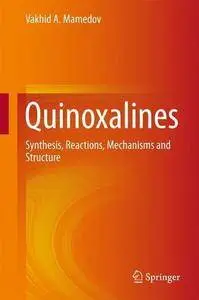Quinoxalines: Synthesis, Reactions, Mechanisms and Structure
Springer | Organic Chemistry | May 28 2016 | ISBN-10: 3319297716 | 437 pages | pdf | 36.5 mb
Springer | Organic Chemistry | May 28 2016 | ISBN-10: 3319297716 | 437 pages | pdf | 36.5 mb
Authors: Mamedov, Vakhid A.
The first and only book that comprehensively describes the opportunities quinoxalines offer as reagents for the synthesis of biologically important condensed derivatives
The book explains new acid-catalyzed rearrangements of quinoxalinones giving benzimidazoles when exposed to nucleophilic reactants, thus leading to biheterocyclic systems
The understanding of the methods and mechanisms of the reactions presented will allow synthetic chemists to extend these ideas to other processes in achieving their goals
This book reviews the fundamental aspects of quinoxaline chemistry: synthesis, reactions, mechanisms, structure, properties, and uses. The first four chapters present a survey of the developments in quinoxaline chemistry since the publication of the monograph on “Condensed Pyrazines” by Cheeseman and Cookson in 1979. These chapters give comprehensive coverage of all the methods of the synthesis of quinoxalines and the important quinoxaline-containing ring systems such as thiazolo[3,4-a]-, pyrrolo[1,2-a]-, and imidazo[1,5-a]quinoxalines. Chapter five describes many new methods for the construction of quinoxaline macrocycles, which are important in applications such as optical devices and materials. The final chapter reviews all previously known rearrangements of heterocyclic systems that lead to benzimidazole derivatives. Mamedov critically analyses these transformations to reveal a novel acid-catalyzed rearrangement of quinoxalinones giving 2-heteroarylbenzimidazoles and 1-heteroarylbenzimidazolones in the presence of nucleophilic reactants (MAMEDOV Heterocycle Rearrangement). This book is of interest to researchers in the fields of heterocyclic and synthetic organic chemistry.
Number of Illustrations and Tables
45 b/w illustrations, 546 illustrations in colour
Topics
Organic Chemistry
Medicinal Chemistry
Industrial Chemistry / Chemical Engineering
Click Here to Buy the Hardcover from Springer
Click Here for More books



